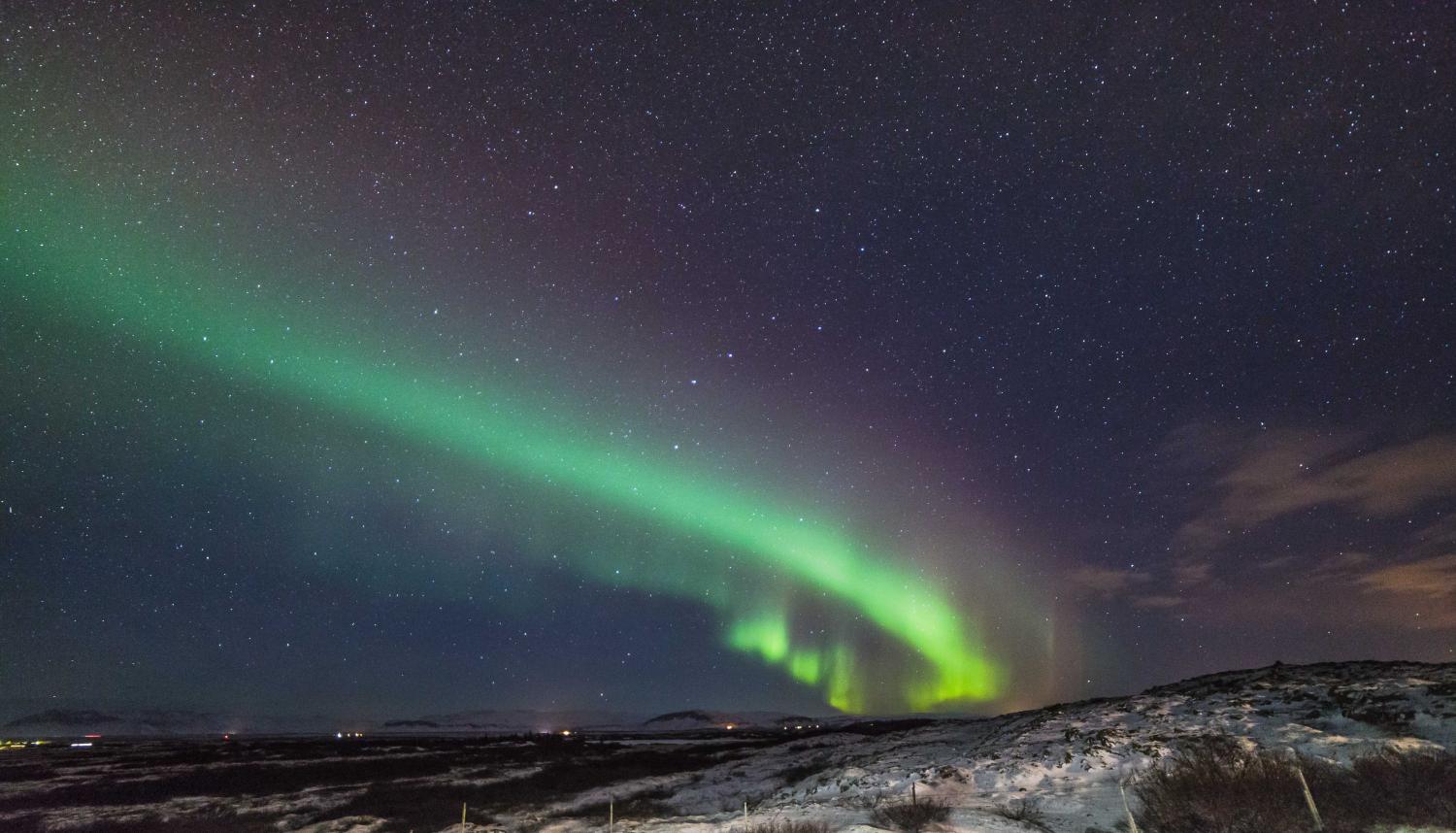Polar Aurora
(Section 3.2.4.3)Definition: Polar aurora: A luminous phenomenon that appears in the high atmosphere in the form of arcs, bands, draperies or curtains.
Auroral activity is the result of the interaction of the solar wind with the Earth’s magnetic field. The solar wind tends to be greater around the maximum of solar activity, which occurs in a cycle of 10−12 years. During the increasing phase of a solar cycle, sunspots indicate areas of solar magnetic activity associated with solar flares and coronal mass ejections. During the decrease from solar maximum, increased solar wind speed is often associated with coronal holes, which allow charged particles to escape along open magnetic field lines.
Polar aurorae are due to electrically charged particles ejected from the Sun (the solar wind) acting on the rarefied gases of the higher atmosphere. The particles, mainly electrons and protons, are channelled by the Earth’s magnetic field to collide with atoms and molecules of gases in the high atmosphere (thermosphere/exosphere). The collisions cause the electrons of nitrogen and oxygen atoms to jump temporarily to a higher, “excited” energy state. Some energy, released on return to normal energy levels, is emitted in the form of photons of light of different wavelengths. Polar aurorae are most frequently observed in arcs around the magnetic poles – the “auroral ovals”.
Coronal mass ejections or solar flares may temporarily enhance the solar wind reaching the Earth’s magnetosphere, perhaps creating a geomagnetic storm. During such events, the auroral oval temporarily enlarges, allowing aurorae to be seen from lower latitudes. In the northern hemisphere, the aurora is known as “aurora borealis”, or the northern lights. In the southern hemisphere, the aurora is called “aurora australis” or the southern lights. Most auroral light is produced at heights between about 90 km and 150 km, but can originate as low as 60 km and occasionally as high as 1 000 km, or more.




